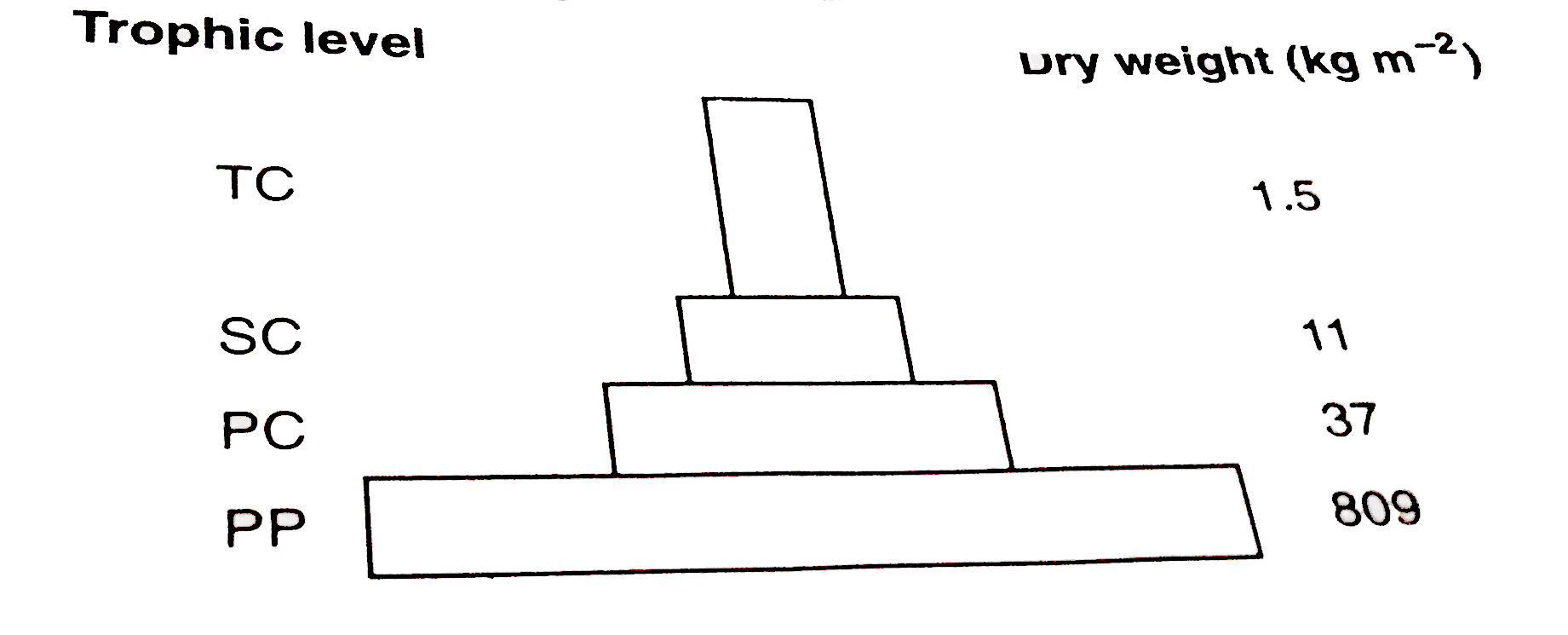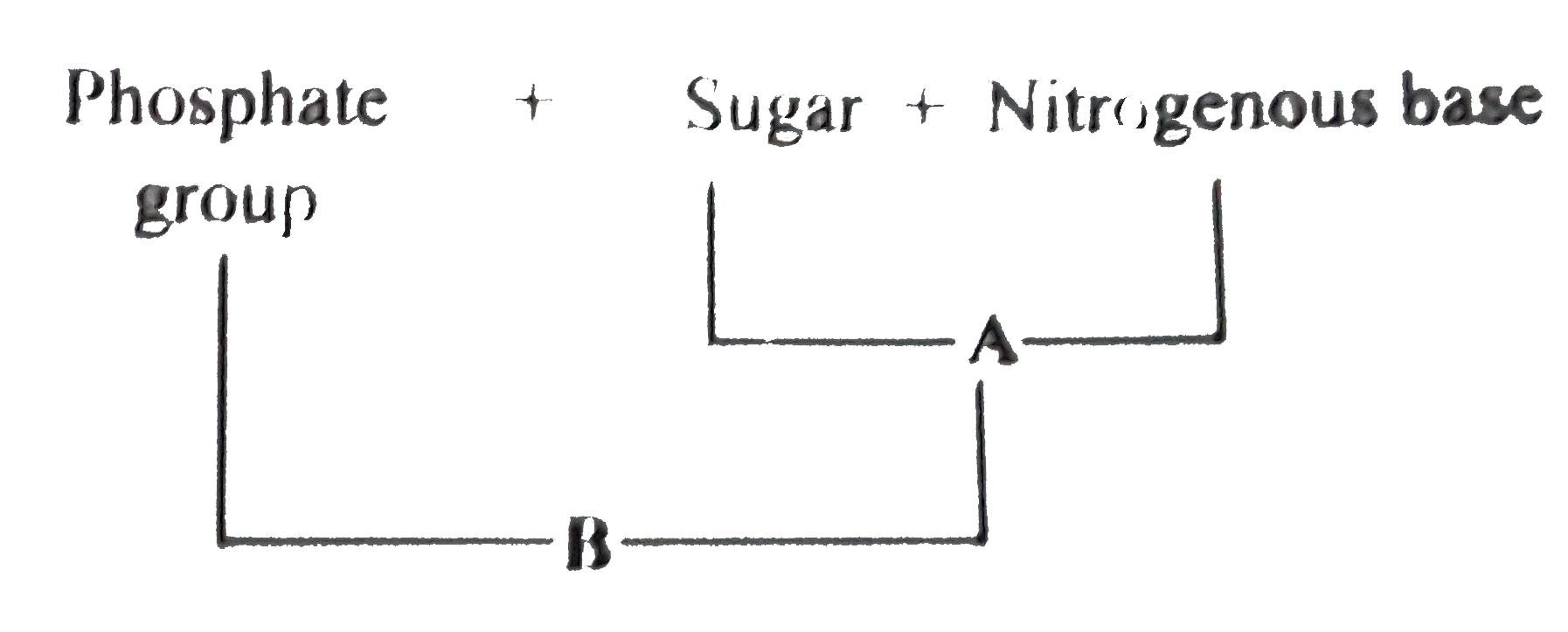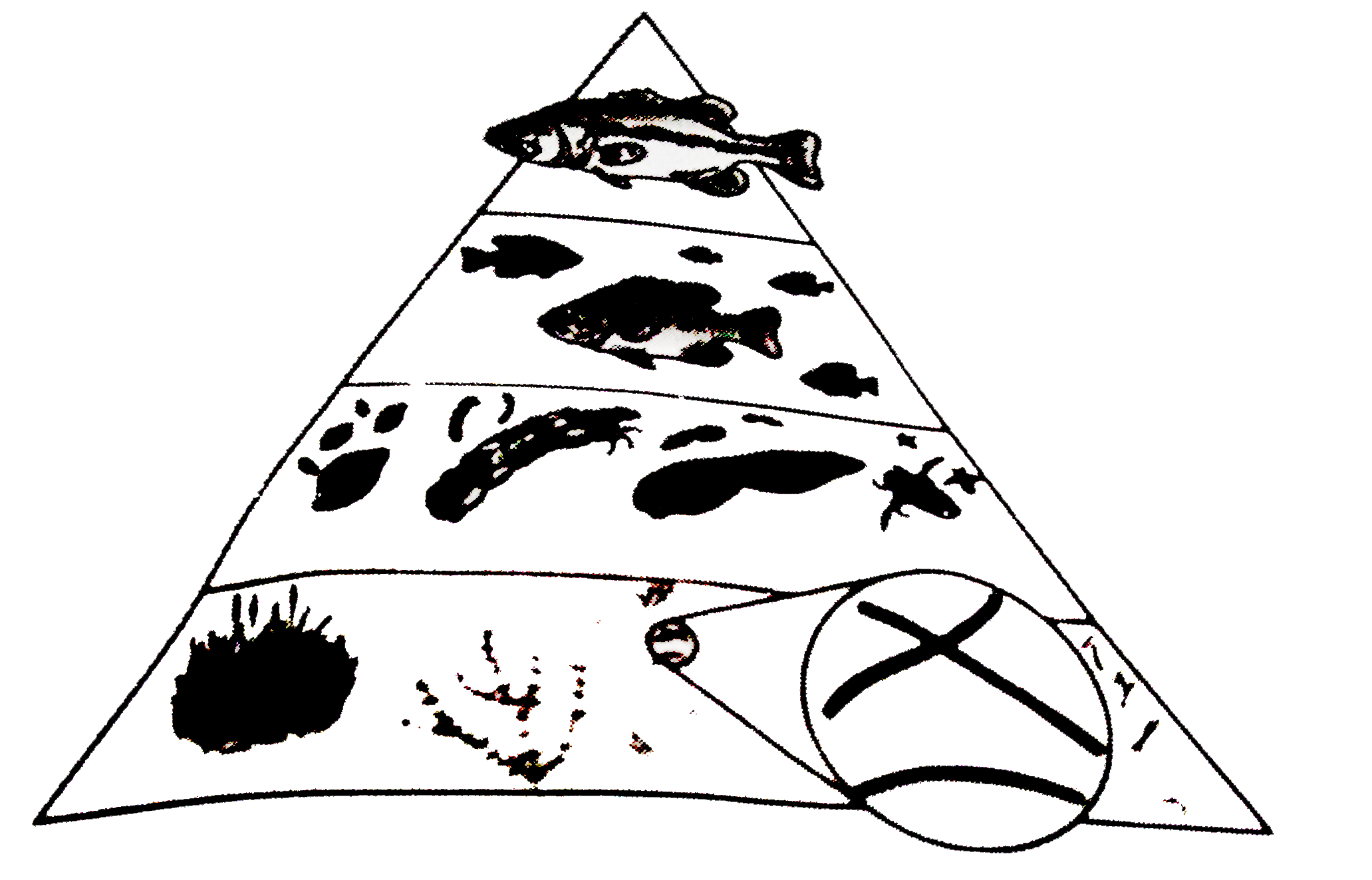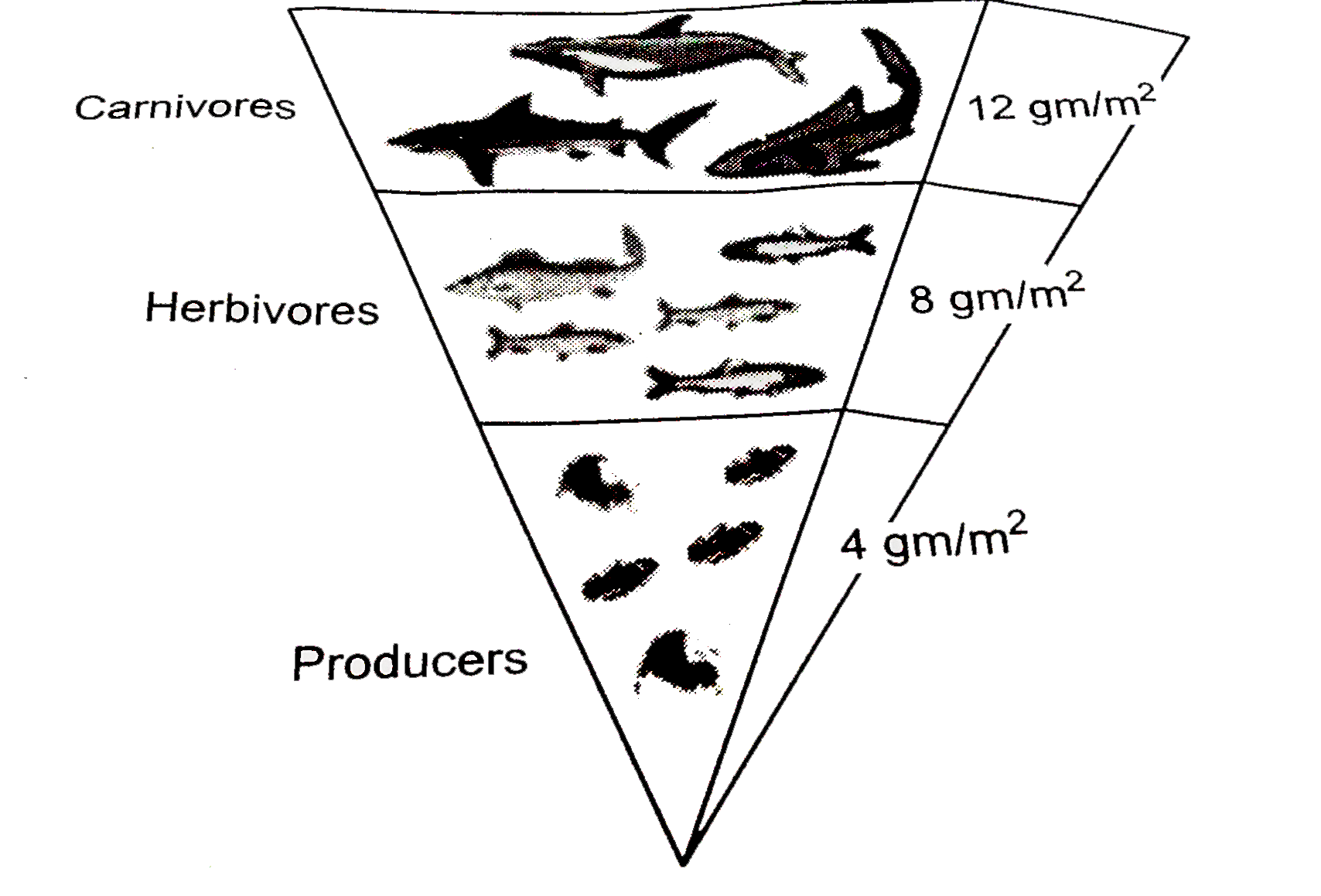How does ecological pyramid represents the graphical representation of food system of living being in biosphere?
Step-by-Step Text Solution:
1. Understanding the Ecological Pyramid:
The ecological pyramid is a graphical representation that illustrates the distribution of energy, biomass, or the number of organisms at each trophic level in an ecosystem. It helps in visualizing how energy flows through different levels of the food chain.
2. Trophic Levels:
The ecological pyramid consists of various trophic levels:
- Producers: These are the base of the pyramid and include plants and other photosynthetic organisms that produce energy through photosynthesis. They occupy the largest area in the pyramid because they have the highest biomass and energy.
- Primary Consumers: These are herbivores that feed on producers. They form the second level of the pyramid and have less energy and biomass compared to producers.
- Secondary Consumers: These are small carnivores that eat primary consumers. They occupy the third level of the pyramid.
- Tertiary Consumers: These are larger carnivores that feed on secondary consumers. They are positioned higher in the pyramid.
- Apex Consumers: These are the top predators in the ecosystem, having no natural enemies. They occupy the highest level of the pyramid.
3. Energy Transfer:
Energy transfer between these trophic levels is inefficient. Typically, only about 10% of the energy from one level is transferred to the next. This means that as you move up the pyramid, the amount of energy decreases significantly, which is why fewer organisms can be supported at higher trophic levels.
4. Graphical Representation:
The ecological pyramid can be represented in three forms:
- Pyramid of Numbers: Represents the number of organisms at each trophic level.
- Pyramid of Biomass: Represents the total biomass of organisms at each level.
- Pyramid of Energy: Represents the total energy available at each trophic level.
5. Conclusion:
The ecological pyramid effectively represents the food system of living beings in the biosphere by illustrating the relationships between different organisms, their energy dynamics, and the structure of the ecosystem. It highlights the importance of producers and the diminishing energy available to higher trophic levels.
The ecological pyramid is a graphical representation that illustrates the distribution of energy, biomass, or the number of organisms at each trophic level in an ecosystem. It helps in visualizing how energy flows through different levels of the food chain.
The ecological pyramid consists of various trophic levels:
- Producers: These are the base of the pyramid and include plants and other photosynthetic organisms that produce energy through photosynthesis. They occupy the largest area in the pyramid because they have the highest biomass and energy.
- Primary Consumers: These are herbivores that feed on producers. They form the second level of the pyramid and have less energy and biomass compared to producers.
- Secondary Consumers: These are small carnivores that eat primary consumers. They occupy the third level of the pyramid.
- Tertiary Consumers: These are larger carnivores that feed on secondary consumers. They are positioned higher in the pyramid.
- Apex Consumers: These are the top predators in the ecosystem, having no natural enemies. They occupy the highest level of the pyramid.
Energy transfer between these trophic levels is inefficient. Typically, only about 10% of the energy from one level is transferred to the next. This means that as you move up the pyramid, the amount of energy decreases significantly, which is why fewer organisms can be supported at higher trophic levels.
The ecological pyramid can be represented in three forms:
- Pyramid of Numbers: Represents the number of organisms at each trophic level.
- Pyramid of Biomass: Represents the total biomass of organisms at each level.
- Pyramid of Energy: Represents the total energy available at each trophic level.
The ecological pyramid effectively represents the food system of living beings in the biosphere by illustrating the relationships between different organisms, their energy dynamics, and the structure of the ecosystem. It highlights the importance of producers and the diminishing energy available to higher trophic levels.
Topper's Solved these Questions
Similar Questions
Knowledge Check
The given ecological pyramid best represents:
 Aupright pyramid of numbersBupright pyramid of biomassCInverted pyramid of energyDupright pyramid of energy
Aupright pyramid of numbersBupright pyramid of biomassCInverted pyramid of energyDupright pyramid of energyAn ecological pyramid of biomass is a representation of the ecosystem's
Aenergy flow through each trophic levelBpopulation in each food webCtissue organisation at each trophic level.Dall of these.An ecological pyramid of biomass is a representation of the ecosystem's
Aenergy flow through each trophic levelBdry mass at each trophic levelCpopulations in each food webDbiological material in relation to abiotic material
Give the technical terms for the graphic representation of the trophic structures in a food chain.
View SolutionLiving systems represent
View SolutionWhat does A and B represent in the given representation ?

View SolutionWhich kind of ecological pyramid is represented by the figure given below:

View SolutionWhich kind of ecological pyramid is represented by the figure given below:

View Solution

